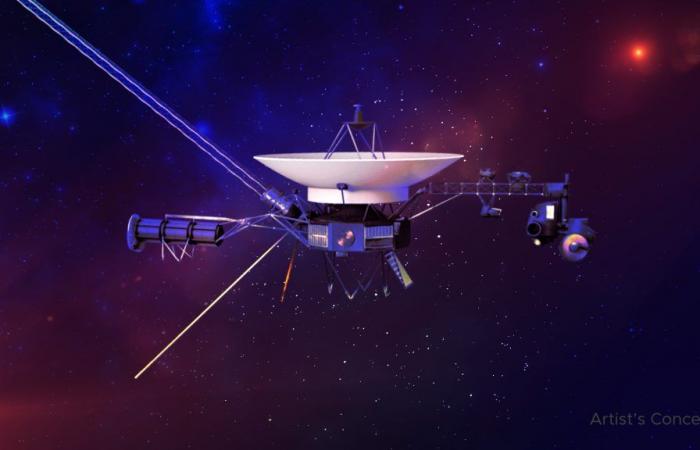The Voyager 1 is back and is getting ready to resume data collection about outer space. A month after engineers at the Jet Propulsion Laboratory (JPL) resurrected the space probe, NASA confirmed that The four instruments now operate normallyso the spacecraft will continue its scientific operations.
According to the space agency, the engineering team carried out a series of remote repairs after reestablishing communication with the probe. A few weeks ago, JPL staff transmitted an order to Voyager 1 to resume sending scientific data. At that point, only two of the four instruments responded properly, so engineers began a recalibration of the remaining two.
Although Voyager 1 is now operational, NASA has not declared victory. 46-year-old space probe requires additional work to resolve the failure it suffered in November 2023, when a memory failure in the flight subsystem caused it to stop sending data to Earth. A chip responsible for storing part of the FDS memory stopped working, affecting a portion of the computer’s software code.
Linda Spilker, project scientist for NASA’s two Voyager spacecraft at JPL, stated that it was necessary to modify the source code of the probe. “What they have to do is relocate that code to a different portion of memory, and then make sure that everything that uses that code knows to go to the new memory location, to access it and execute it,” he told ArsTechnica.
Voyager 1 will continue sending data to Earth
Voyager 1 and its twin, Voyager 2, are the space probes that have been in operation the longest. Thanks to these missions, NASA has obtained crucial information about the most distant planets in our solar system. The ships have instruments that study plasma waves, magnetic fields and particles, and are the only ones that take samples of interstellar space.
At the moment, Voyager 1 is more than 24 billion kilometers from our planet, making repairs difficult. It takes 22.5 hours for the signal to reach the probe and another 22.5 hours to return to Earth. Because of this, engineers have to wait almost two days to find out if their instructions are successful.
The good news is that all four instruments operate normally. The only thing left is to resynchronize the timing software on the three computers and maintain the digital recorder, which records data for the plasma wave subsystem.







